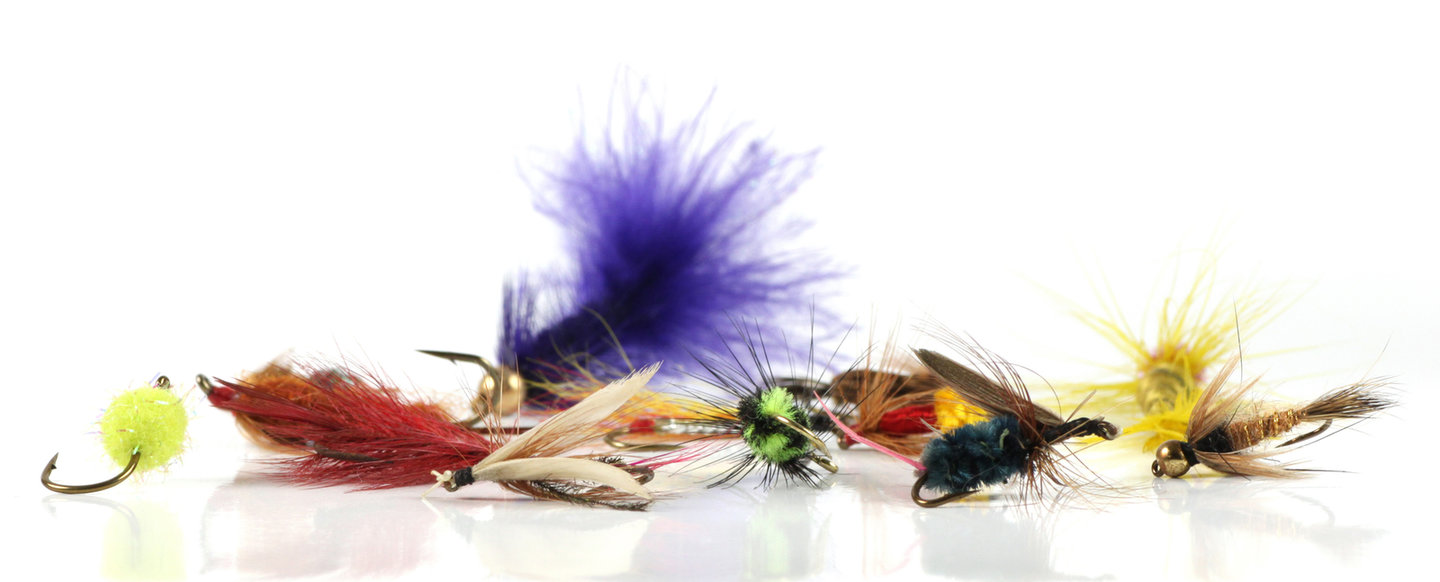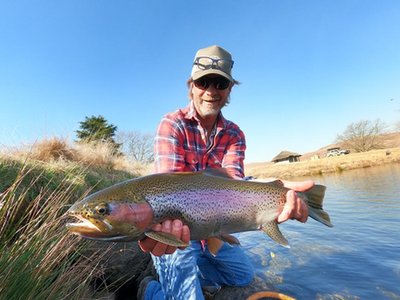Rule of seven
Those who can, do. But it also helps if one analyses what’s not working in order to avoid repeating the error in future fishing expeditions. Gareth George has penned the piscatorial Seven Habits of Successful Fly Fishers; Winter Edition.


Mind set might be everything, but I’m no shrink and am not going to pretend that the positive laws of attraction will beget more fish. But what is proven, is if you fish with confidence, you don’t second guess what you’re doing all the time and hence stick with the plan that will eventually yield results!
I’ve a few seasons of winter trout fishing in South Africa under my belt (too many, my wife might argue!), so hopefully these cardinal basics will make your experience on the water more rewarding.
1. Find the fish. As obvious as this might sound, too many anglers jump onto a water and start casting. Beside tell-tale rises, you have to make an educated guess of where the fish are. In the colder months, trout favour shallows, either looking to go through their instinctual spawning behaviour or feed on the fringes. Spillways are a productive starting point, being accessible and generally rock or shale, which the fish will mill around. Fish will also gravitate towards inlets, looking for flowing water, but reeds or weeds mean you may need a float tube to work this area effectively. Dam walls, especially if they have a rocky layer on top, tend to have fish cruising up and down near the surface. It’s always better to cast to a sighted fish!
2. Work the top water first. Early morning is when the fish will be in the upper reaches of the water column, so tackle up with your floating line (I prefer the Airflo Superflo) and stay out of your float tube. Work those fringes, with short casts and a gentle presentation, the least amount of casting the better. A 12 foot leader is preferable. Retrieving is a bit like roulette, your choice of either static or slow or give them something to chase. I like to start very slow and let the fish find my fly and then only strip when I’m sure they aren’t buzzing your fly.
3. Patience will always be extolled as a virtue for fly fishers and I’m a big believer in keeping your fly in the water longer, rather than casting relentlessly. If you have to cast to a moving trout, then make sure you lead it. Any fly put on its head will invariably spook the fish. Patience is a relative term, so if you think you’re fishing slow, try fishing a little slower or try leaving your fly, but always keep contact with your line. The finest anglers I’ve had the pleasure of fishing with have more patience than me.

4. Are they feeding or procreating? This will dictate fly pattern, such as whether you’re going to use a colourful set up, to attract or irritate the trout, or if you’re going to mimic a food source. Spawning fish are easy to spot chasing each other and will always gather around shallow, shale/rocky substrate. Feeding fish will be largely found foraging around the weed beds and dam fringes, bear in mind the food supply is predominantly made up of far smaller invertebrates at this time of year.
5. Time to float tube. When the sun gets high enough, (around 9am in winter) then you can focus on some effective float tubing. It has been called legalised trawling and although you might catch a lucky fish motoring around the dam, you’ll generally scare more trout than you catch. So, again, find an area you can work effectively, which will revolve around structure. Keep your movements to a minimum and make sure you cover this area with your fly before you disturb it with your tube. (To a trout we look like the QE2 bobbing around.) Generally you’ll be on an intermediate line, which is better than a sinking one, as you keep your fly in the water longer.


The distant hills might be brown with winter grass but the spoils are there to be enjoyed by the patient angler
6. Induce the take. There’s no real textbook on retrievals or stripping your fly. Your slow is another angler’s medium. A pause can be any duration between retrieves and length of one’s strips vary greatly. Regardless of your retrieval, on an intermediate or sinking line I always induce the take or hang the fly. You never know what’s following your fly and all too often trout will chase right up to the bank or your float tube fins. Get into the habit of simply lifting your rod when you’ve about five metres of fly line left in the water. This changes the direction of the fly from a horizontal motion to a vertical one, often resulting in the trout committing right at the death. Do this on each retrieve, so it becomes second nature or routine.
7. Fish where the fish are. Don’t move away from an area just because you caught a fish there. If there’s one fish, there will be more as it’s the habitat that holds fish. This is especially true in winter, when they tend to congregate. So work an area properly and methodically before moving off to find greener pastures.
Fishing still involves some luck, and in the sage words of Gary Player, the more you play, the luckier you’ll get. Above all, remember not to take it too seriously. This is your relaxation time, and while we all want to celebrate each catch, never forget to celebrate the moment!